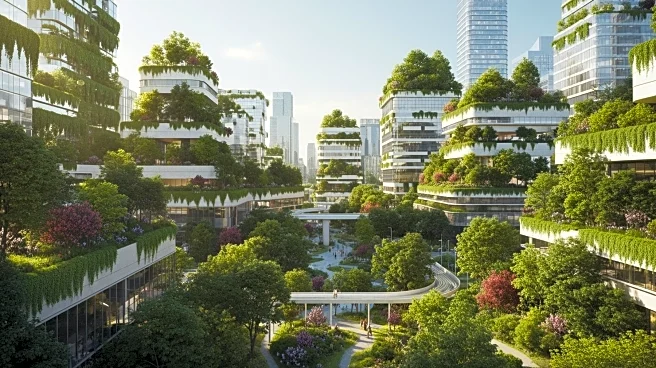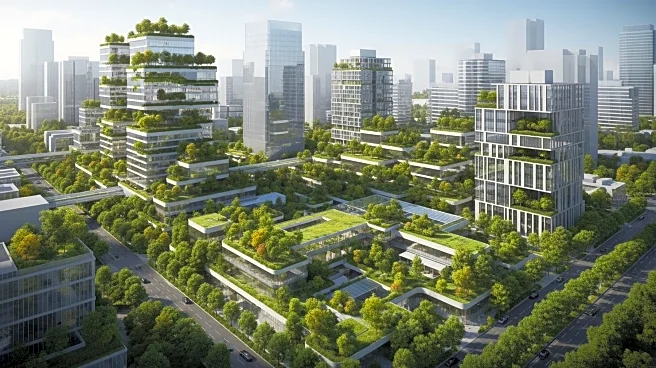What's Happening?
Urban planners are increasingly adopting the '15-minute city' concept, which aims to reorganize urban life so that all necessary functions and needs of city dwellers can be reached within 15 minutes by bike or on foot. This concept is gaining traction
in cities like Paris, Melbourne, and Oslo, and is being implemented in various forms worldwide. The idea is to reduce reliance on cars and public transport, thereby minimizing ecological footprints and enhancing quality of life. However, the concept has largely overlooked the needs of urban biodiversity. Recent discussions suggest integrating biodiversity conservation into the 15-minute city framework, promoting a win-win scenario for both human and non-human life. This approach involves creating connected networks of green spaces that support plant and animal life, alongside human activities.
Why It's Important?
Integrating biodiversity into urban planning is crucial for sustainable development. The 15-minute city concept, when aligned with biodiversity goals, can enhance urban livability by reducing pollution and fostering social cohesion. It addresses global challenges such as biodiversity loss and climate change, offering a strategic way to make cities more resilient and inclusive. This approach can mitigate risks of gentrification and social segregation by ensuring diverse and accessible green spaces. It also supports the Sustainable Development Goal 11, which focuses on making cities inclusive, safe, resilient, and sustainable. By fostering relationships between people and nature, cities can combat the 'nature deficit disorder' and improve overall well-being.
What's Next?
Future steps involve overcoming challenges such as institutional fragmentation and financial constraints. Urban planners are encouraged to adopt flexible, context-driven models that integrate small, connected habitat elements. Inclusive governance and participatory planning are essential to avoid green gentrification and ensure equitable access to green spaces. Financial feasibility can be achieved through community involvement and informal strategies. Public communication and education are vital to address fears and misunderstandings about urban biodiversity. Monitoring the impact of the 15-minute city on both people and nature will provide evidence to adapt planning strategies for achieving social and environmental benefits.
Beyond the Headlines
The integration of biodiversity into urban planning not only enhances ecological health but also fosters cultural and social diversity. It encourages a shift towards more inclusive and participatory urban governance, where diverse voices and needs are considered. This approach can transform cities into multifunctional spaces that support both human and non-human life, promoting a deeper connection between people and their environment. It challenges traditional urban development models and offers innovative solutions for creating livable cities in the face of global environmental and social challenges.













